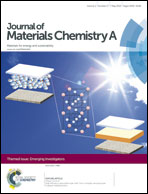High temperature in situ neutron powder diffraction of oxides
Abstract
Neutron powder diffraction (NPD) is a powerful tool for the characterization of oxides. Unlike X-ray diffraction where scattering occurs from the electron cloud, neutrons interact with the atomic nucleus enabling direct characterization of the oxygen sublattice. This reveals critical information related to the location, number, and mobility of oxygen anion vacancies and interstitials in hypo- and hyper-stoichiometric oxides. This review examines the growing use of in situ NPD to characterize materials for oxygen anion transport and oxygen storage in fuel cells, ion transport membranes, and as catalysts and catalyst supports. Typical measurement temperatures range between room temperature and 1200 °C, under vacuum or in controlled gas atmospheres from pure oxygen to dilute hydrogen.

- This article is part of the themed collection: Emerging Investigators

 Please wait while we load your content...
Please wait while we load your content...